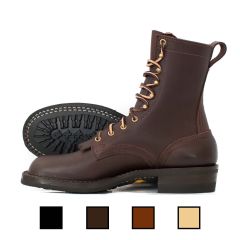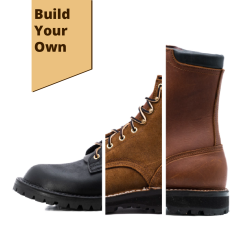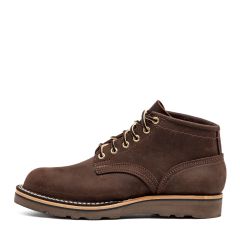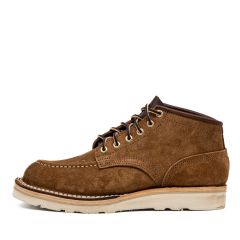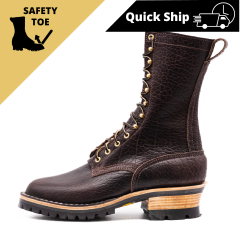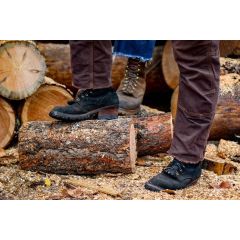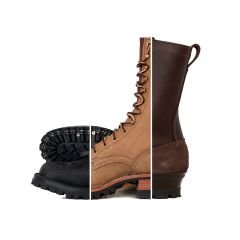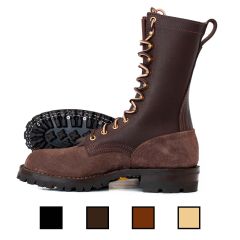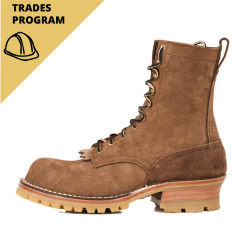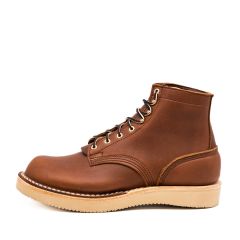Work Boots For Roofing
Importance Of Proper Footwear For Roofers
When it comes to roofing work, having the right footwear is essential for safety and comfort. Proper work boots are crucial for protecting against common accidents like slips and falls. They also provide support and durability to withstand the challenging conditions of roofing environments.
Safety Comes First
The right work boots help prevent accidents by offering features like slip-resistant outsoles and ankle support, reducing the risk of injuries on the job.
Comfort And Efficiency
Quality work boots not only enhance safety but also increase comfort and productivity for roofers who spend long hours on their feet in various weather conditions.
Long-Term Durability
Investing in durable work boots made of high-quality materials ensures they can withstand the demanding nature of roofing work, offering economic benefits and protecting the roofer's feet over time.
Key Features To Look For In Roofing Work Boots
Slip-Resistant Outsoles
The significance of slip-resistant outsoles cannot be overstated, especially when it comes to ensuring stability on slippery surfaces. Rubber is highly recommended for its superior grip, offering a reliable foundation in hazardous conditions.
Durability And Material Quality
For overall protection, choosing boots made from leather is wise. Leather boots offer excellent resistance against sharp objects, heat, and moisture, making them a durable and protective choice for various work environments.
Proper Fit And Ankle Support
A proper fit and good ankle support are essential to prevent foot and ankle injuries. Boots that provide stability can greatly reduce the risk of sprains, ensuring safety and comfort even in challenging conditions.
Lightweight And Breathability
The advantages of lightweight and breathable footwear include combating fatigue and discomfort during long work hours. Preferred qualities in work boots are a lightweight design and breathable linings, which contribute to overall foot health and comfort.
Cushioned Insoles And Supportive Design
Comfort is crucial, as it helps reduce strain on the feet and back. Look for boots with ample cushioning and ergonomic support to minimize discomfort. These features are important for protecting against nails, metal shards, and other hazards, preventing piercing injuries on the job.
Ease Of Movement
Ensuring agility on various surfaces is vital for safety and efficiency at work. Boots with flexible soles and upper materials facilitate natural foot movement, adding to the ease of movement and effectiveness in diverse working conditions.

Durability And Comfort In Roofing Footwear
Durability: A Must-Have
Durability is essential in roofing footwear to withstand harsh conditions like extreme temperatures and sharp objects. High-quality materials like thick leather resist damage, ensuring long-lasting protection and cost savings.
Comfort: Vital For Productivity
Comfort is crucial for roofers who spend long hours on their feet. Proper cushioning, arch support, and breathable materials reduce fatigue, blisters, and injuries. Comfortable boots support focus and efficiency, enhancing job performance and reducing the risk of accidents.
Achieving The Balance
Balancing durability and comfort is key in choosing Nicks Boots roofing work boots. Boots should offer robust protection while maintaining a comfortable fit to support the roofer's well-being and job performance. Investing in quality footwear benefits safety, efficiency, and long-term health.
Benefits Of Slip-Resistant Outsoles For Roofers
Slip-resistant outsoles are a fundamental feature for any roofing work boot, providing numerous benefits that transcend basic safety measures. These specialized outsoles are designed to offer superior grip and stability on surfaces that are often slick, uneven, or precarious. Understanding these advantages can highlight why selecting boots with slip-resistant outsoles is crucial for roofers.
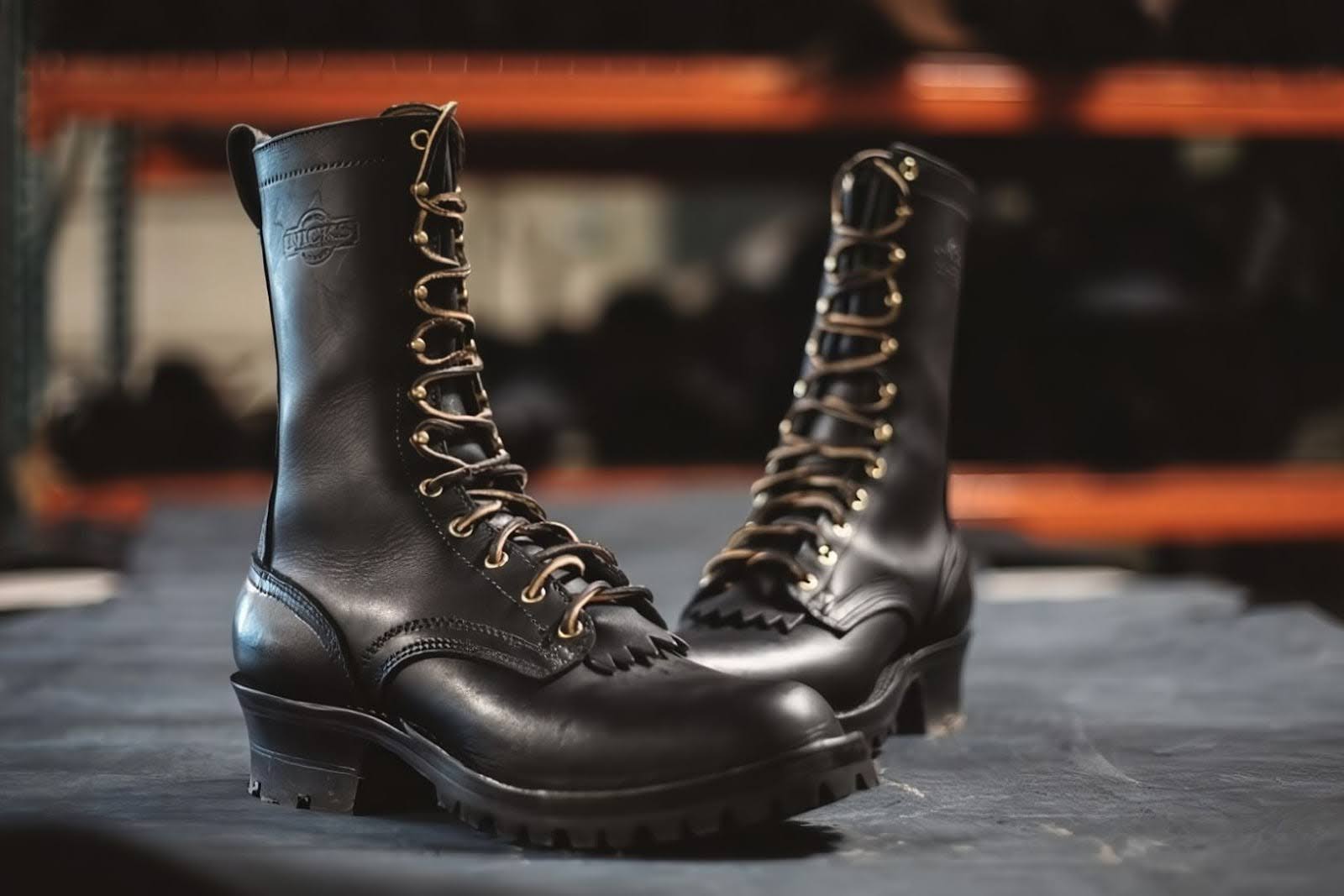
Impact Of Weather Conditions On Roofing Footwear Choice
When selecting the appropriate work boots for roofing, it is crucial to consider how different weather conditions can impact your choice. The varying climates and environmental challenges faced by roofers demand footwear that can adapt and provide protection regardless of the weather. Understanding the specific requirements for each condition can guide roofers in making informed decisions, ensuring both safety and comfort on the job.
- Hot Weather Conditions: In hot or sunny weather, the roofing surface can become exceedingly hot, presenting risks of burns and excessive sweating. Boots with breathable materials and moisture-wicking linings are essential to keep the feet cool and dry. Moreover, opting for lighter-colored boots can help reflect sunlight, reducing heat absorption. The outsole material should also be resistant to melting or deforming at high temperatures, ensuring longevity and performance.
- Cold Weather Conditions: Cold or icy conditions demand boots that provide excellent insulation and waterproofing. Insulated boots keep the feet warm, preventing frostbite and enhancing comfort. Waterproof or water-resistant materials are vital in preventing moisture from snow or ice from penetrating the boots, keeping feet dry. Additionally, outsoles designed for superior traction on ice and snow can help prevent slips, ensuring safety when working on roofs in winter conditions.
- Wet Weather Conditions: Working in the rain or on wet surfaces requires boots that offer waterproof protection and slip resistance. Materials such as rubber or specially treated leather that repel water can keep feet dry, reducing the risk of blisters and discomfort. Slip-resistant outsoles with deep grooves or patterns enhance grip on wet surfaces, essential for preventing falls. It's also beneficial to choose boots with quick-drying interiors to avoid dampness that can lead to fungal infections.
- Versatile Footwear For All Conditions: Given the varied nature of roofing projects and the unpredictability of weather, selecting versatile footwear that can perform well in multiple conditions is advantageous. Look for boots that combine several key features such as breathability, insulation, waterproofing, and durable, slip-resistant outsoles. Such multi-faceted boots ensure roofers are prepared for whatever weather conditions they may encounter, providing safety and comfort throughout the workday.
Considering the impact of weather conditions on roofing footwear choice is paramount for ensuring the well-being and efficiency of roofers. By prioritizing features that counteract the challenges posed by different weather scenarios, roofers can maintain high standards of safety and comfort, enabling them to focus on their work with confidence regardless of the environmental conditions.
Frequently Asked Questions
What materials are best for roofing work boots?
The best materials for roofing work boots are those that offer durability, comfort, and protection. Typically, leather designed for toughness and weather resistance are top choices. These materials can withstand the harsh conditions and provide the necessary support for long hours on the job.
How often should roofing work boots be replaced?
The lifespan of your roofing work boots depends on their quality, how often they're used, and the conditions they're exposed to. On average, roofing work boots should be inspected regularly and might need replacing every 6 to 12 months, especially if they’re used daily under harsh conditions.
Are steel-toe boots recommended for roofing?
While steel-toe boots offer excellent protection against falling objects and compression, they are not always recommended for roofing. This is because they can be heavy and less comfortable during long hours of work. Lightweight composite materials are often preferred for their safety features without the added bulk.
What is the difference between waterproof and water-resistant boots?
Waterproof boots offer complete protection against water, making them ideal for working in wet conditions without allowing moisture to penetrate the boot. Water-resistant boots, on the other hand, can only prevent water penetration to a certain degree but will not provide the same level of protection if submerged or exposed to heavy rain.
Can roofing boots be resoled?
Yes, many high-quality roofing boots are designed to be resoled. Resoling can extend the life of your boots and is a cost-effective way to get more wear out of them. However, not all boots are suitable for resoling, so it's important to check the manufacturer's information before purchasing.
What features make a work boot good for roofing?
A good roofing work boot should have several features, including slip-resistant soles for safety on steep and slippery surfaces, a comfortable fit for long hours of wear, durability to withstand tough conditions, and lightweight design for ease of movement. Additional features like waterproof or water-resistant properties and breathability are also beneficial.
How do I ensure a proper fit when buying roofing work boots online?
Ensure a proper fit by measuring your foot according to the manufacturer's instructions and consulting the size chart provided. Look for online retailers with good return policies, so you can exchange the boots if they don't fit well. Reading customer reviews may also offer insights into sizing accuracy.
Can I wear athletic shoes instead of boots for roofing?
While athletic shoes may be more comfortable, they lack the necessary safety features, support, and durability required for roofing work. Work boots designed specifically for roofing are the safest option, offering slip-resistant soles and adequate protection against hazards.
What type of sole provides the best grip on roofs?
Soles made from non-slip rubber with deep treads offer the best grip on roofs. These soles are designed to provide maximum traction on steep and uneven surfaces, reducing the risk of slips and falls. Additionally, look for soles that are heat-resistant if you'll be working in hot conditions.
